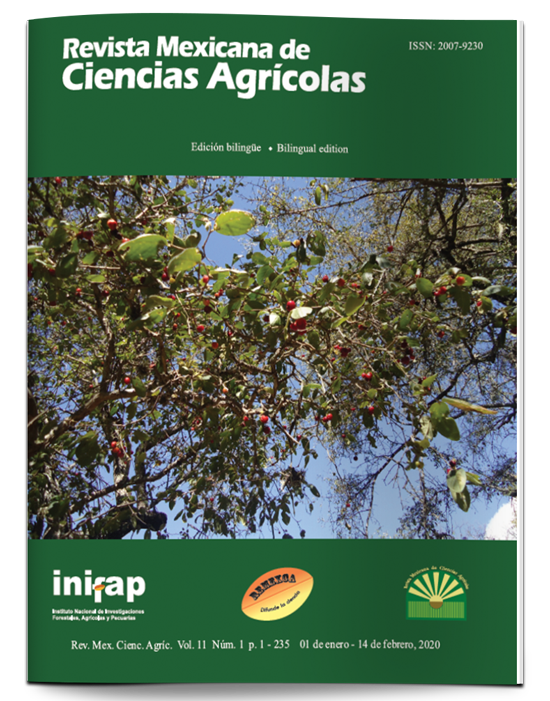Diagnosis of the use of soil and vegetation in the microbasin Tula, Mexico
DOI:
https://doi.org/10.29312/remexca.v11i1.2213Keywords:
geographic information systems, land use change, transition matrices, vegetationAbstract
Changes in land use and plant cover are the main component in global, regional and local deterioration, and have been documented as the second global environmental problem. In Mexico, there are few planning policies in the territorial development of the municipalities and a poor decision making in the management of natural resources, an example of which is the Tula microbasin. The objective of the research work was to diagnose the current situation and the changes in the coverage and land use of the Tula microbasin, through spatial analysis, to know its main processes of change, with the purpose of designing strategies that allow sustainable management of its natural resources. The spatial analysis was carried out, based on Landsat satellite images (1992, 2000 and 2017) using geographic information systems. To identify the changes, cross-tabulations were applied and exchange rates were estimated. In the analyzed period (25 years), the agricultural area increased 33% and a loss of forest area of 22%. Exchange rates and likelihood of permanence indicated that continuing with the current trend will continue to increase agricultural areas and bodies of water, as well as the abandonment of some areas due to their low productivity.
Downloads
Published
How to Cite
Issue
Section
License
The authors who publish in Revista Mexicana de Ciencias Agrícolas accept the following conditions:
In accordance with copyright laws, Revista Mexicana de Ciencias Agrícolas recognizes and respects the authors’ moral right and ownership of property rights which will be transferred to the journal for dissemination in open access. Invariably, all the authors have to sign a letter of transfer of property rights and of originality of the article to Instituto Nacional de Investigaciones Forestales, Agrícolas y Pecuarias (INIFAP) [National Institute of Forestry, Agricultural and Livestock Research]. The author(s) must pay a fee for the reception of articles before proceeding to editorial review.
All the texts published by Revista Mexicana de Ciencias Agrícolas —with no exception— are distributed under a Creative Commons License Attribution-NonCommercial 4.0 International (CC BY-NC 4.0), which allows third parties to use the publication as long as the work’s authorship and its first publication in this journal are mentioned.
The author(s) can enter into independent and additional contractual agreements for the nonexclusive distribution of the version of the article published in Revista Mexicana de Ciencias Agrícolas (for example include it into an institutional repository or publish it in a book) as long as it is clearly and explicitly indicated that the work was published for the first time in Revista Mexicana de Ciencias Agrícolas.
For all the above, the authors shall send the Letter-transfer of Property Rights for the first publication duly filled in and signed by the author(s). This form must be sent as a PDF file to: revista_atm@yahoo.com.mx; cienciasagricola@inifap.gob.mx; remexca2017@gmail.
This work is licensed under a Creative Commons Attribution-Noncommercial 4.0 International license.



